What are some of your favorite parts of the hobby?
Community is the best part of this hobby. I’ve been active in three California clubs, and now, in New England, I’m helping out with Massachusetts, New Hampshire, and Maine garden railways.
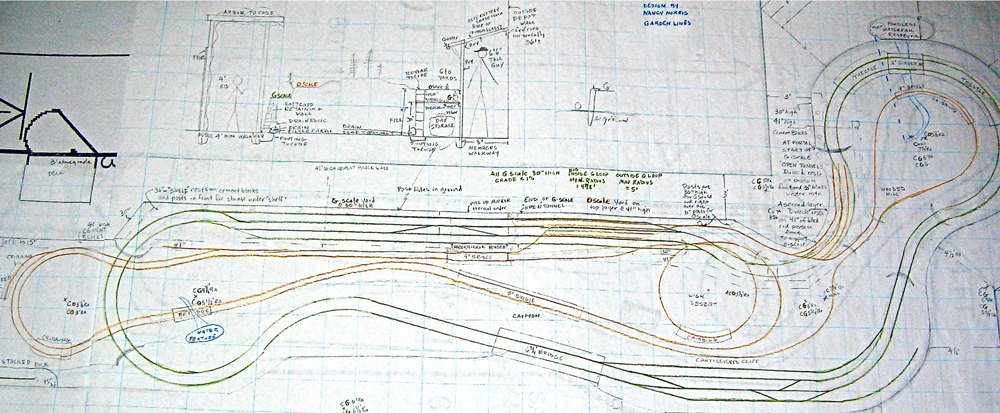
In 2007, after 10 years helping northern Californians build garden railways through my business, GardenLines.net, the San Leandro Historical Railroad Society, www.slhrs.org, hired me to design an outdoor railway behind their 100+ year old Southern Pacific depot, home to an impressive HO scale (1:87) railway modeling SP stations in California.
Versatility. Although I measured and made sure all the track would fit in our space, how the retaining walls held it all together was the choice of the members. I drew a plan for them to measure points to stake out on the ground. With a limited budget, some of us brought stone and other materials from home. Having visited over 500 garden railways, I enjoy each unique scene. See Resources at end for design ideas.
My personal journey, to bring to expression my uniqueness, is my third-most favorite part of constructing garden railways. I get to create stuff out of my dreams, try it on for size, and see if it fits the environment. If it’s appropriate, then it’s in harmony with Nature. I see that others also feel this way, which is why it’s great to share a club-owned railway. Working with nature allows me to feel its truth.
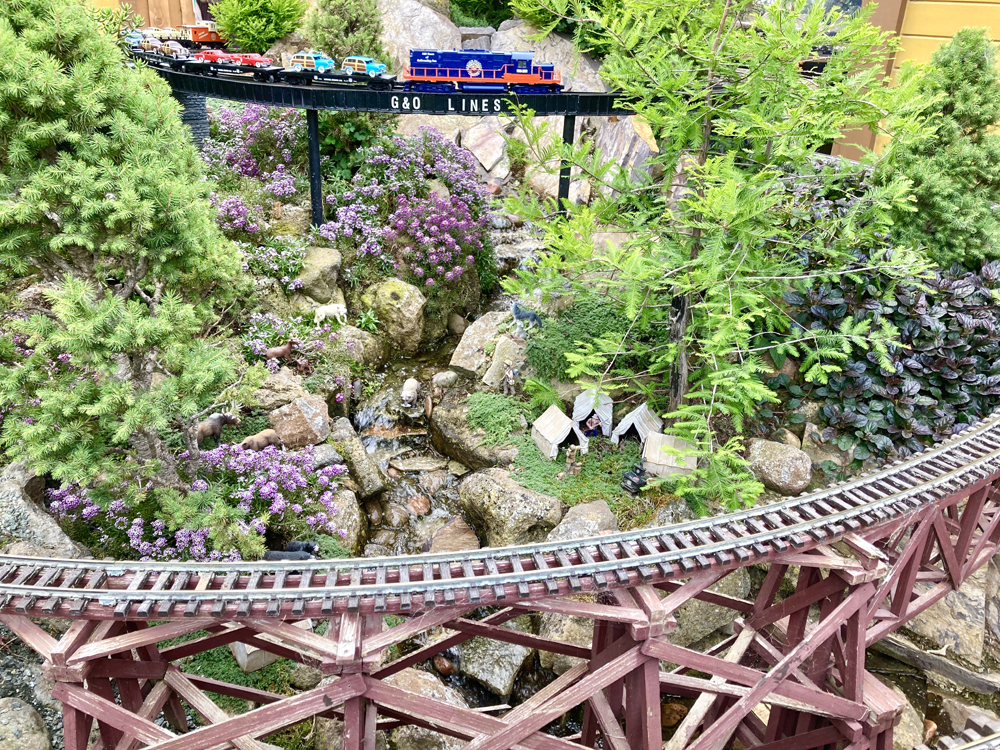
Perspective within and around the railway thrills me. A large waterfall greets the public as they enter the G&O. All the O-scale items members assembled in the elevated center part of the railway. Large scale trains run lower and closer to view. Therefore, smaller O-scale trains give the illusion of being far away. Greening up Norris Falls (l to r) are dwarf Alberta spruce (Picea glauca ‘Conica’, Zones 4-8), sweet alyssum (Lobularia maritima ‘Clear Crystal Purple’, Zones 5-9), bald cypress (Taxodium distichum, Zones 4-9), and Black Scallop bugleweed (Ajuga crispum, Zones 3-9).
The G&O Outdoor Railroad was born to give members a place to run their trains, but also to show off the hobby to the public many times a year. The city of San Leandro made open houses a condition for this gift when they moved the depot to its current home in Thrasher Park.
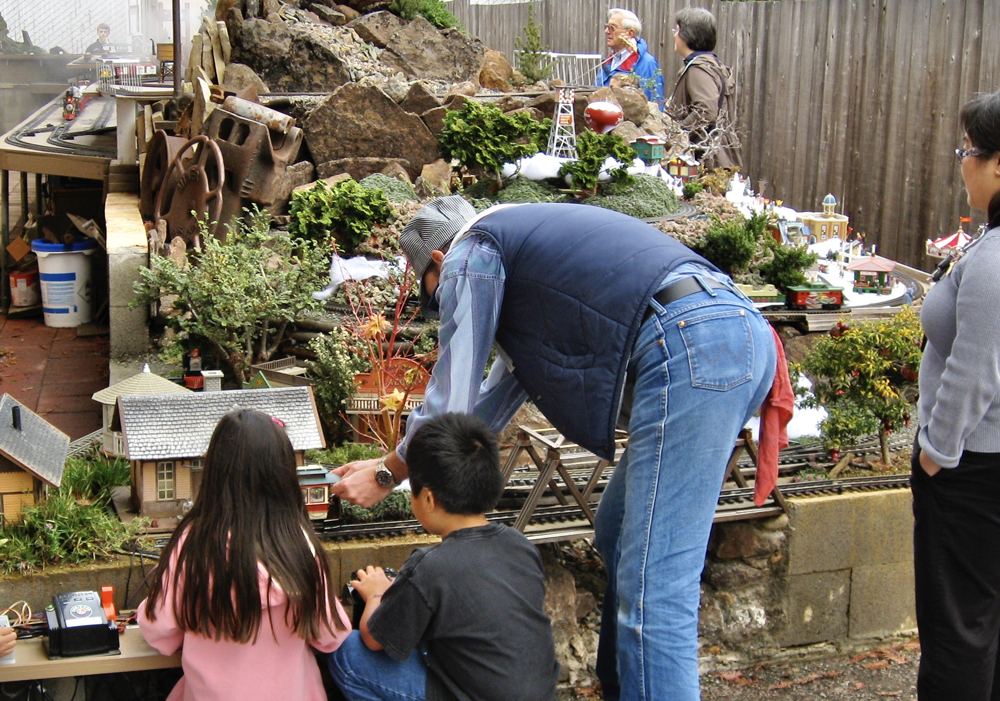
Kids! At 5 years old, the G&O was taking shape inside the 80’-long, inner-city train yard. One end of the layout features the “Children’s Railway,” where local kids learn how to run trains in both scales with controllers at their level. Member Glenn Wigand shows them how.
While building the hardscape, several full-scale railroad-y items appeared on site and became the back side of Coupler Mountain, a view block for the rest of the railway. Along the depot (left), a large steam-up bay offers passing sidings for members to get their trains on the track, all mostly level, to allow for live steam trains. It’s also track powered. Two guests view activity that you can see in the next photo. Where is all that smoke coming from?
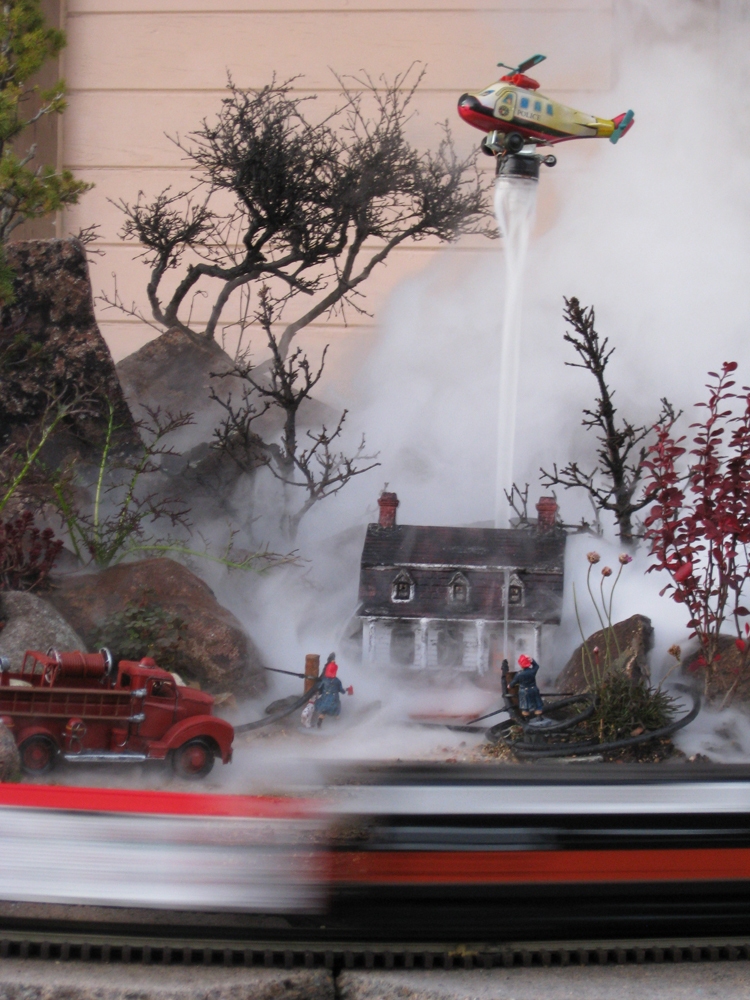
More kid-stuff. I was given a smoke unit that burns vegetable oil, so I created a water feature and wrote about it in Garden Railways, December 2015, “Putting out fire!” As if it isn’t enough to run trains around multiple loops, we modelers like to create other theatrical distractions. When I found a ceramic house in O-scale, I figured it could get wet without falling apart, Someone gave me a helicopter (too small for my large scale layout), so it too made it into the fire scene after a bambi box and clear plastic tube made it look like a stream of water gushed from its belly. I did get a complaint that a “burning” house at Christmastime was inappropriate, but I didn’t understand. Aren’t we “Putting out fire?” Thank you, fire fighters.
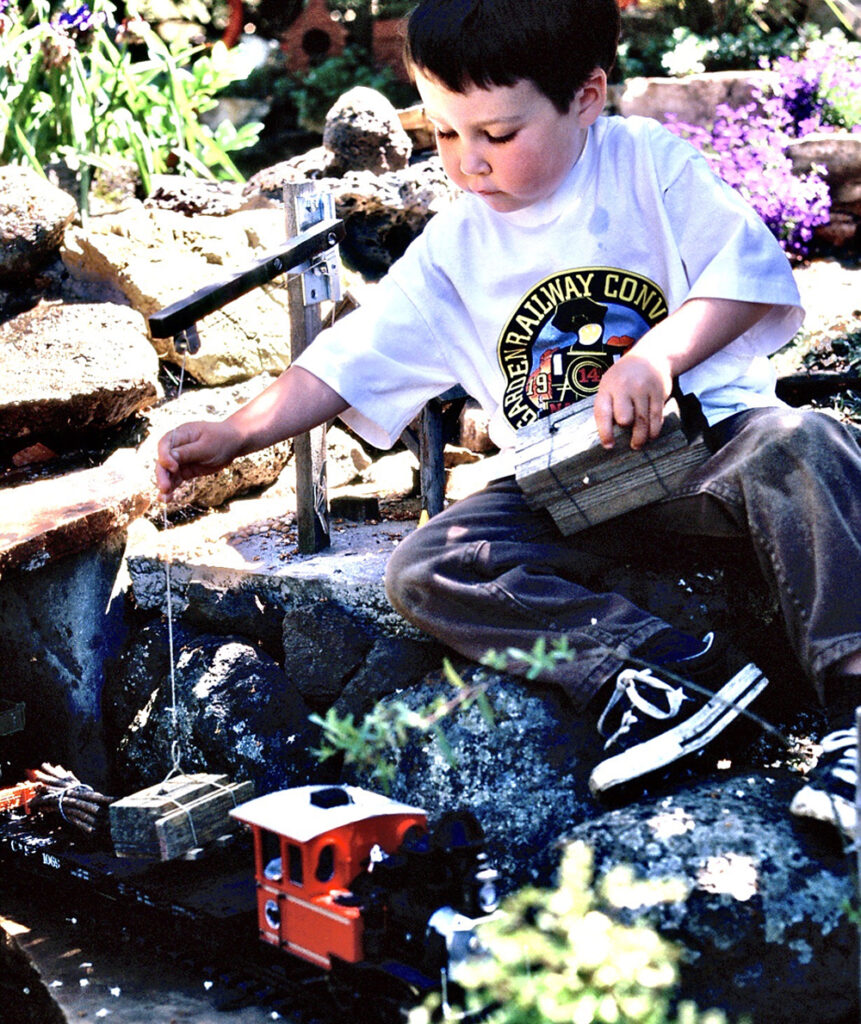
How did you get started in the hobby?
Because I had been building and flying radio-controlled model airplanes for 10 years, I created my first garden railway to teach my young grandson how to control the trains with a transformer, so that he would later understand how to better control model airplanes. Cars on bridges, figures doing stuff, a sand pit for Tonka digging, and dinosaurs were set up so he could move everything to learn about design — and play!
A 3-year-old Lake must “hands-on learn” how to turn the dial on the LGB transformer to stop the train’s flatcar exactly under the boom of the crane, unwrap the tiny rope from the cleat, lower the hook, and pick up logs or lower lumber pallets from the sawmill. It was a gas to see him crane his neck up to teach much older kids how to “turn the knob to 3, because 4 makes it crash.”
What was your first large scale locomotive?
I’ve always loved kits as a way to get started in any hobby. In 1997, two affordable starter sets, LGB Stainz and LGB Lake George & Boulder (see previous photo) jump-started my little railway. For the longest time, I wasn’t going to get into live steam, because it’s expensive, compared to track-powered engines, but so many other factors pulled me in. Now my favorite engine, Accucraft’s Emma, runs and runs. My next project is building two 7/8ths” (2’ narrow gauge -1:13.7) engines from kits: a Regner Georg live-steamer, and a PLine diesel Fowler Resilient with battery power.
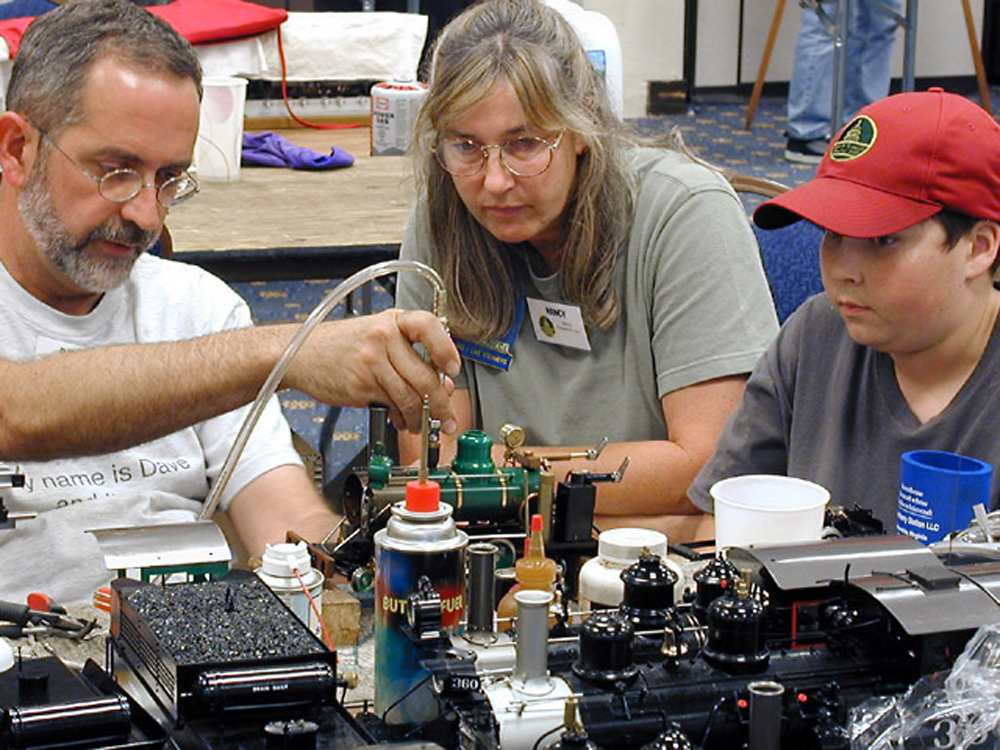
Lake learned a lot about engines by building a Project Locomotive from scratch (see Resources) and by maintaining our first live steamer (pictured), an Accucraft Mimi. At the 2005 Sacramento Summer Steamup, Dave Hottman powers her engine with compressed air to show us how to tune Mimi’s wheel valves. Previously it ran only in reverse. Dave says, “She needs to say, ’I – think – I – can,’ NOT ‘I ….. thnk- Ican.’ ” Wow, what a difference after tuning the valves!
What has been your biggest modeling success?
Without a doubt, “my” biggest success and source of happiness is how working in this hobby has supported my grandson, Lake Phillips, into becoming a competent builder, mechanic, electrician, artist, designer and all-around worker bee. From age 3 to his present 28, each new task afforded him pathways of discovery about his inclinations, interests, and natural abilities. For a teacher, this is thrilling to observe — and I’ve recognized similar achievements in some of my clients. Last but not least, I’ve gained skills in so many fields of interest, always going down the path that interested me most.
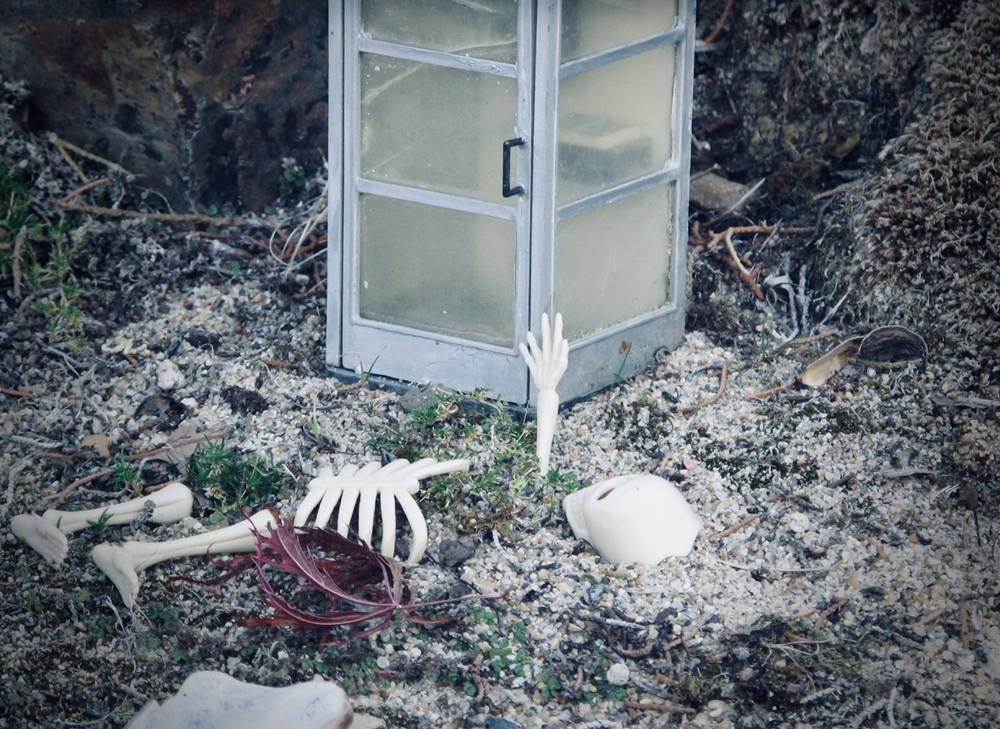
What’s your least favorite part?
This past year, my hips decided to make it difficult to walk and carry heavy things. While I’ve made some health progress, my brand new railway in Maine will be a challenge, but I’ve already built a nice stone-arch bridge. Lake has dubbed my railway “The Small and Manageable”!
What was your biggest modeling mistake?
Partnering with a sociopath never works. I’ve tried to build railways for two people who had little knowledge of railroads, physics, or a sense of harmony. Their requests became ever more over-the-top, so that nothing satisfied their desire to seemingly overpower nature. I’ve since learned (The Sociopath Next Door, by Martha Stout, Ph.D) that the only two things one can do in this situation is to 1) Run! and 2) Keep on running!
What advice would you give to a new hobbyist?
Most people tune out when they think they’re being given advice (more on this later). As adults, we’re sick of being schooled. But if I had just one thing to advise, I’d say, “learn about your strengths and limitations”. Do anything to get started but do plenty of research. Visit something you might want to model and take photos. Be true to yourself. Using common sense, check in with your senses to discover if the road you’re on is meant for you, but start somewhere! Go to see trains. Join a club…
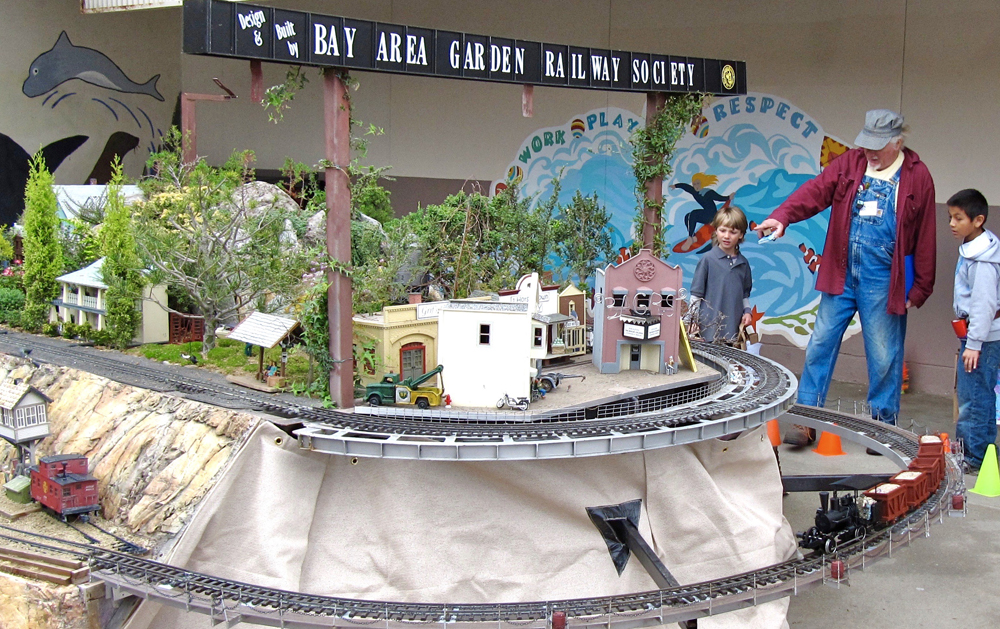
As a member of the Bay Area Garden Railway Society (BAGRS, https://bagrs.org), I oversaw the building and care of “The Roving Garden Railroad” by BAGRS members. Photos show two of the venues where we hauled the traveling-railroad-on-a-trailer 2010-2019 in order to give the public an idea of what they could build in their own yards. At a coastal elementary school on Book Day, we were invited to run trains and point out the story as does Terry Hurley for two children. We modeled an old book that I read as a kid, The Boxcar Children by Gertrude Warner, about four orphans who run away from their supposedly mean grandfather and live in a deserted boxcar — quite well!
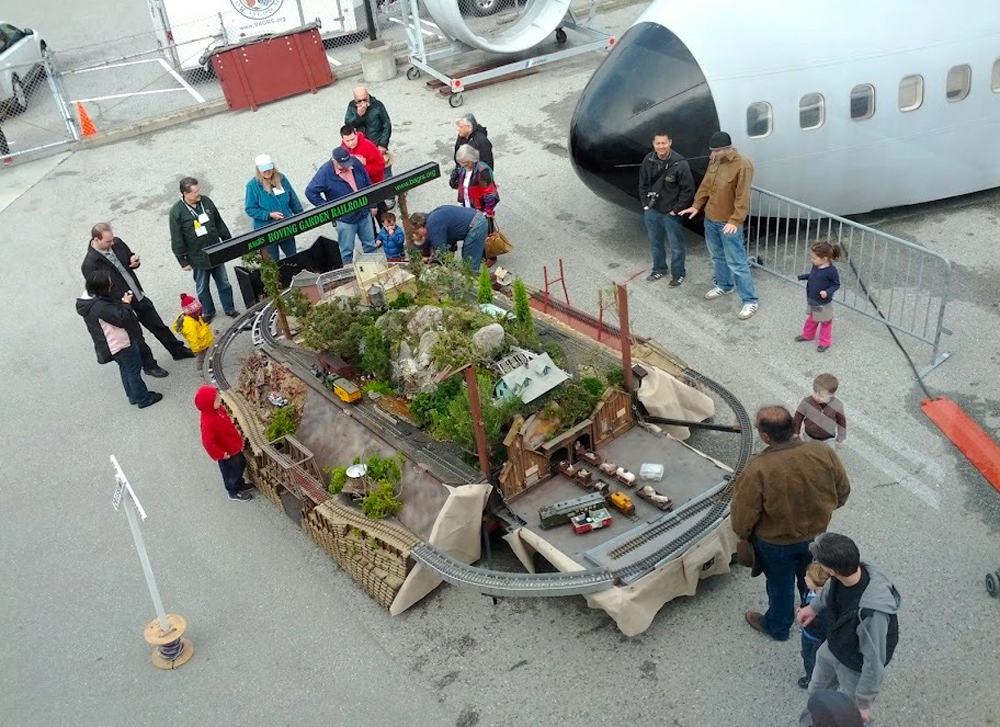
The Roving Railroad set up several years in a row at Hiller Aviation Museum, just south of San Francisco. Three separate lines on 100’ of track, six bridges, a village, a camp with a water feature, and many live plants and rocks told the story. BAGRS members walked around it sharing with the public its story with a happy ending. All remained relatively unscathed after bouncing along the highway for hours each trip.
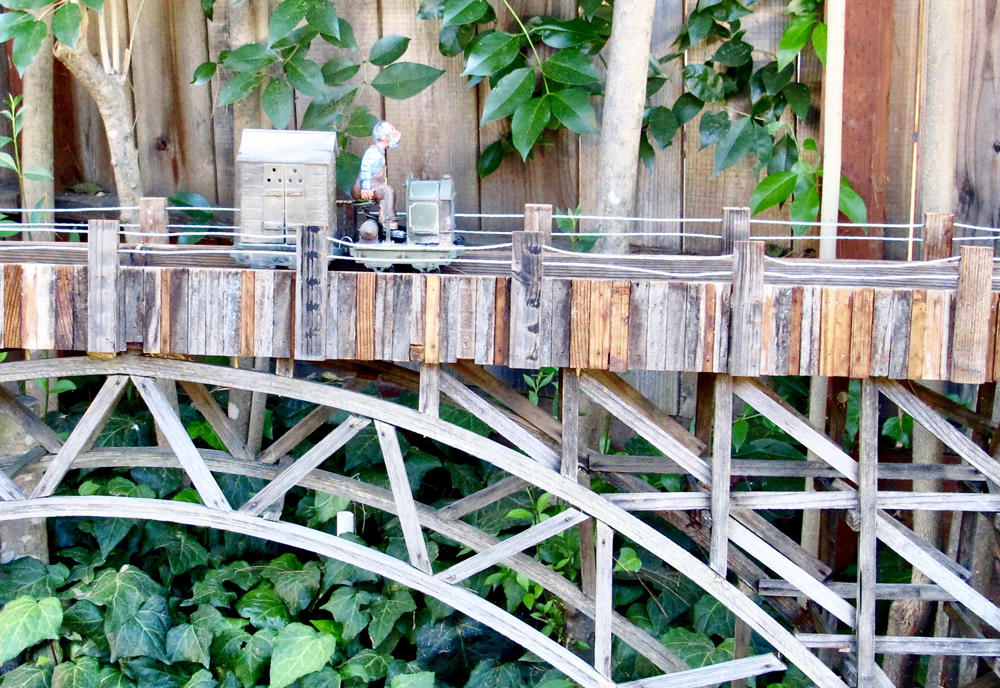
Build something really cool, like the 10’ wooden-arch bridge that I modeled early in my career after driving over the Glen Canyon Dam Bridge in Arizona. I built it (minus the topmost part) when I was really poor and couldn’t afford a brad nailer. Each brad was hammered with (yes) a hammer and (yes) my thumb and forefinger soon healed. Without a table saw for ripping fine-scale lumber, I bought 3/4” redwood tomato stakes for most bridge parts. For the thin laminated curved pieces, I paid one dollar per rip at a lumber yard, then soaked them in a big puddle to get them to bend. I love the way the 19-year-old bridge blends with the fence behind it. In front of this scene I built a stacked flagstone bench, from which I admired this view at a lower vantage, pulled weeds, took photos and sipped tea.
Although trestles and other wooden structures look more interesting if built skinny, I decided early on that beefy is better outdoors and upsized bents and braces to a larger standard than some modelers like, but my old untreated redwood bridge still stands. I eventually topped it with a steel beam hidden by scale vertical boards for a secure roadbed — after I bought a brad nailer. Recognize the Simplex driver?
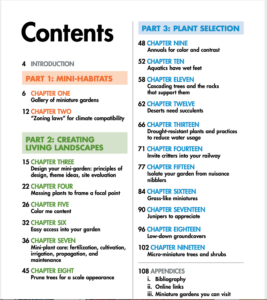 My book. If you want to know just about everything I knew after 13 years in the hobby, get my book, Miniature Garden Guidebook, 2011, Kalmbach Books. https://kalmbachhobbystore.com/product/book/12444. Some of the material comes from my column “Greening your railway” for Garden Railways magazine, but 50% is new.
My book. If you want to know just about everything I knew after 13 years in the hobby, get my book, Miniature Garden Guidebook, 2011, Kalmbach Books. https://kalmbachhobbystore.com/product/book/12444. Some of the material comes from my column “Greening your railway” for Garden Railways magazine, but 50% is new.
For 24 years I made a living building garden railways, spending months on each project. One client, now deceased, lived in a massive house with an extensive yard and he had us meet up after each week and again at the beginning of the following week. Every Friday I’d tell him what I’d done that week and then what I planned to do the next week. Every Friday (I swear this is true) he’d say, “Oh no, we don’t need that; let’s keep it simple,” to which I’d agree. Early the next week, he’d be excited to tell me his ideas, which (always) were exactly as I had laid out the previous Friday. Again, I simply agreed, “Good idea!”

Maine. What better way to create a “sense of place” in my now-emerging railway at my new home than to model the 100-year-old bridge that lives one mile down river, the Union River Bridge. It’s now traversed every summer weekend by our local excursion line, “Downeast Scenic Railroad,” https://www.downeastscenicrail.org — see them on Facebook! A t my last railway (“Bigger and better: 7/8n2…” or “Hypertufa…”) I modeled Muir Bridge, also a girder, but it rests on a steel trestle. This time I’ll again use plastic to create the girder sides, all of which will be painted with actual rust. The old concrete and block stone piers will be fun to sculpt, too. I can’t wait to see my 7/8th” train crossing it while hearing the full-scale whistle down river.
Oh yeah, have fun!
Resources
Basic Project Engine instructions: panyo.com/project/index.htm. Scratchbuild a live-steam engine.
Design your railway, parts 1-3






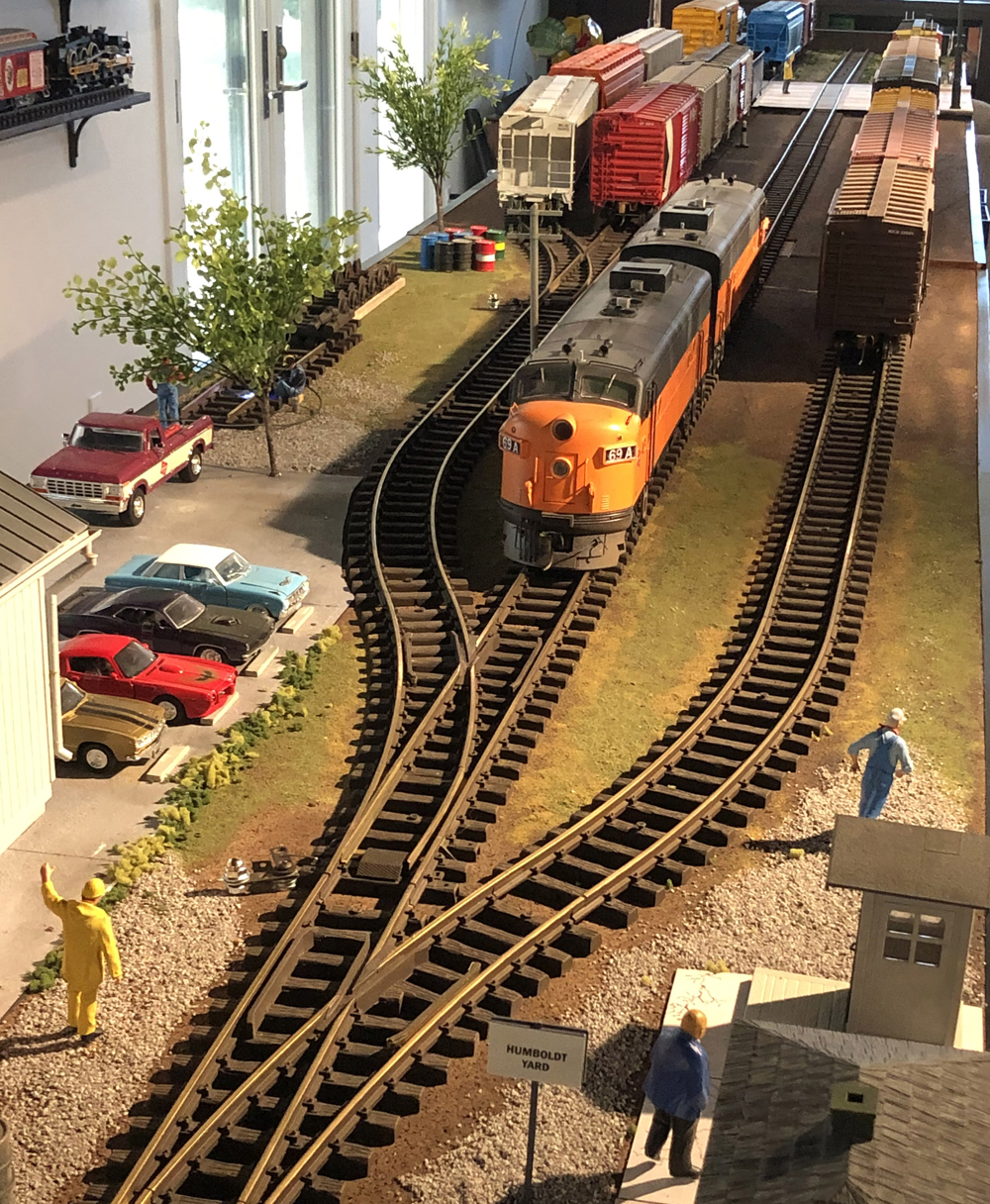

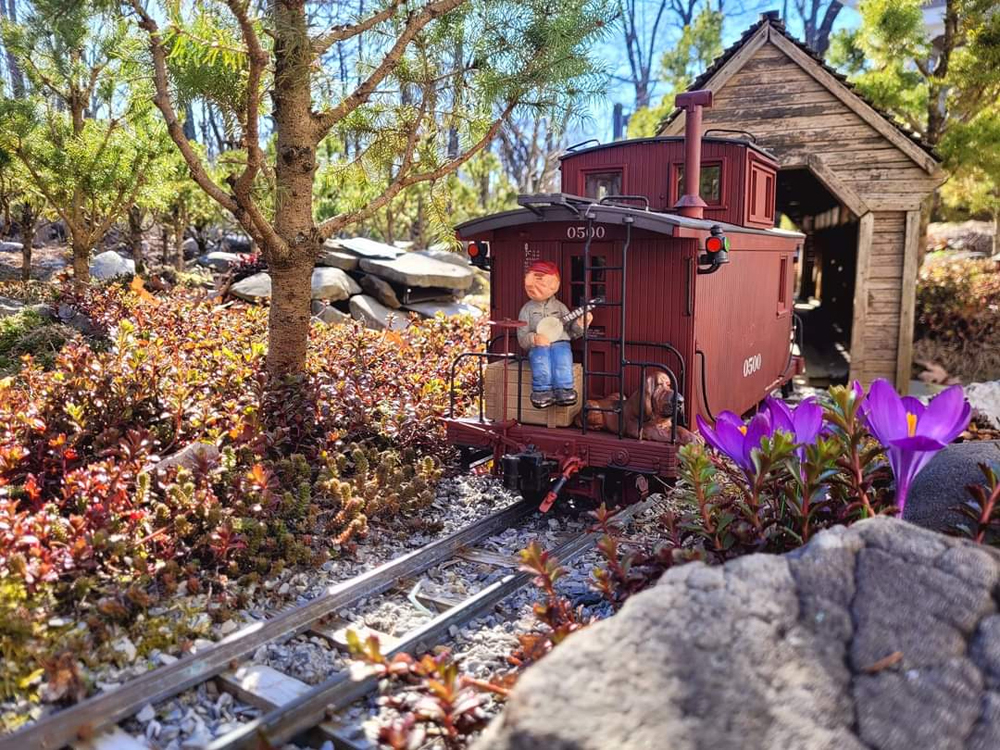





Some really lovely work!
We need more people like you that take the time to share and include our future railroad hobbyists in their designs.
Michael
Hello Michael! Thanks for the compliment. Glad you enjoyed the story and now feel inspired to share and include our future railroad hobbyists in your designs. Please share your story!
NN